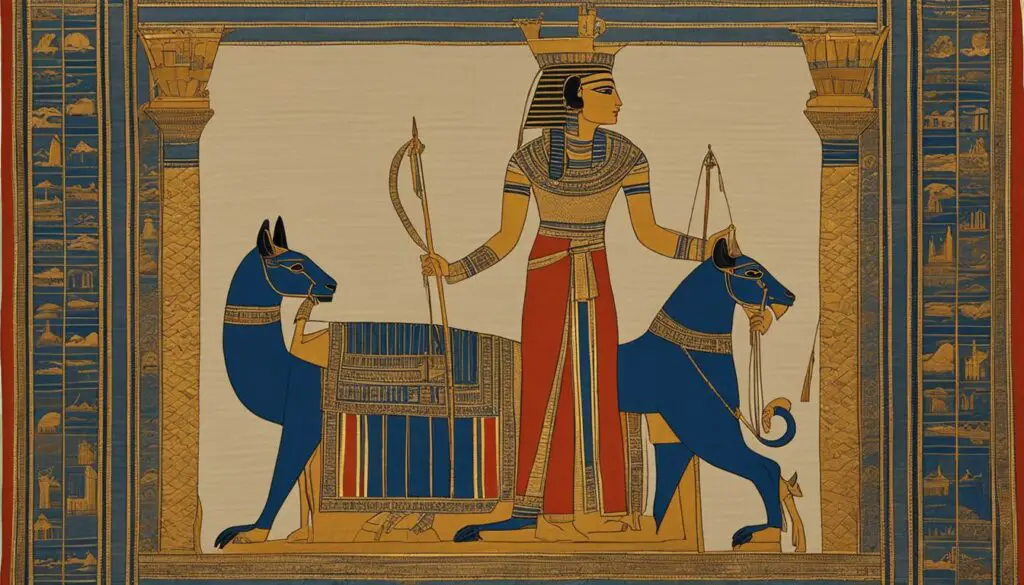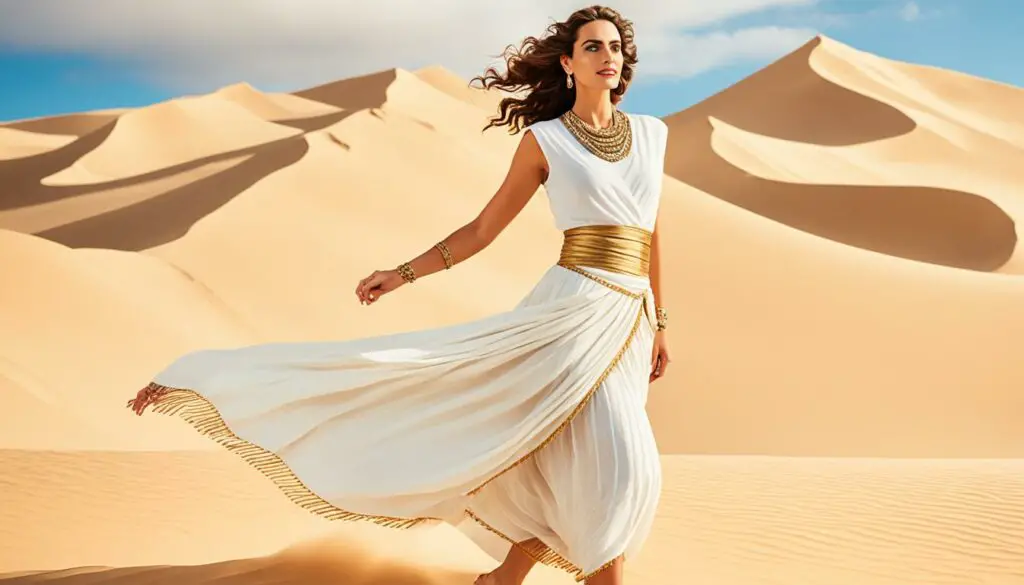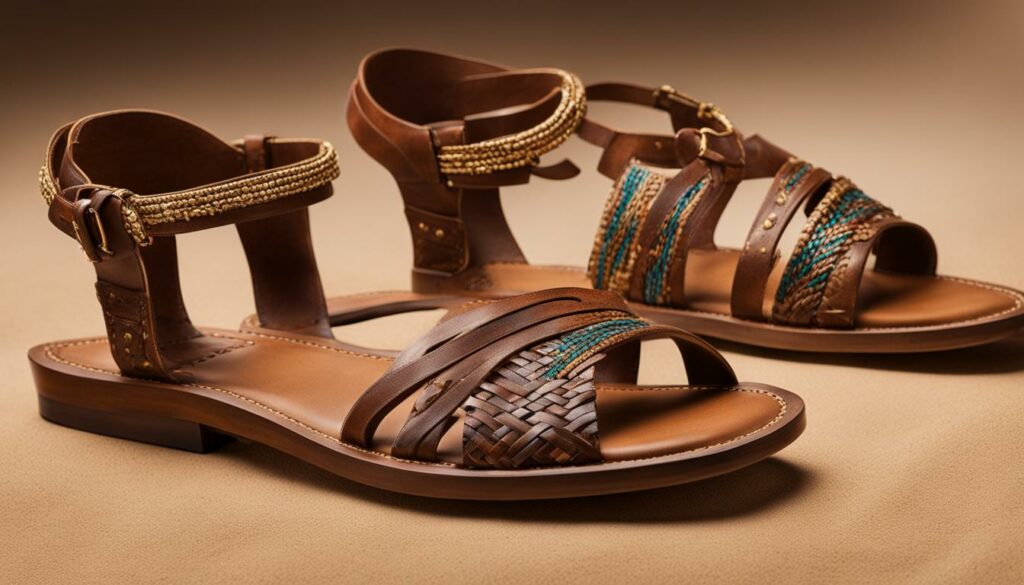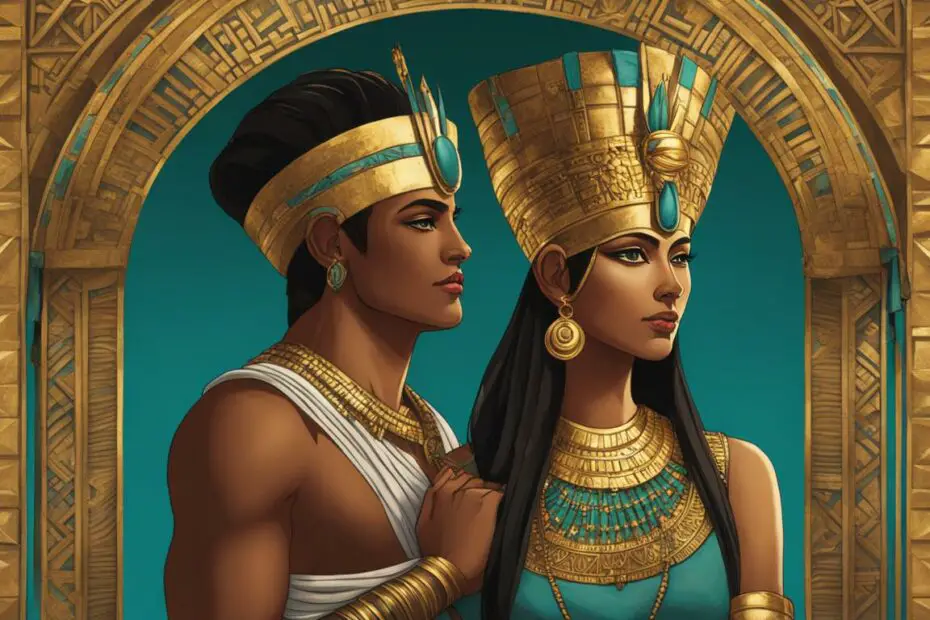Have you ever wondered how people in ancient Egypt dressed? The clothing choices of this ancient civilization were not only practical but also a reflection of their culture, wealth, and social hierarchy. Step into the world of ancient Egyptian fashion and discover the intriguing secrets behind their attire.
Ancient Egyptian fashion was deeply intertwined with their daily lives, symbolizing their social status, occupation, and even religious beliefs. The primary fabric used in ancient Egyptian clothing was linen, a lightweight and breathable material suitable for the hot and arid climate of Egypt. But what were the different clothing styles and designs adopted by men and women? And how did footwear, wigs, and hairstyles contribute to their overall fashion statement?
Prepare to unravel the mysteries of ancient Egyptian clothing as we delve into the rich history of these fascinating garments. From the traditional attire of the ancient Egyptians to the materials used, the cultural significance, and the impact of fashion on their society, this exploration will take you on a captivating journey back in time.
So, are you ready to uncover the secrets of this ancient civilization’s fashion choices? Let’s embark on this remarkable adventure and discover the world of ancient Egyptian clothing and fashion.
Textiles and Materials
Ancient Egyptian clothing was primarily made from linen, a fabric produced from the fibers of the flax plant. Linen was the material of choice due to its lightweight and breathable nature, making it well-suited for the hot climate of Egypt. The linen fabric was typically left in its natural white color, as dyeing was a challenging process. However, on rare occasions, Egyptians used red, blue, and yellow dyes to add vibrant hues to their garments.
Wool, on the other hand, was considered impure and rarely used in ancient Egyptian clothing. Animal fibers, although available, were reserved for the wealthier individuals in society due to their rarity and higher cost.

| Fabric | Characteristics | Usage |
|---|---|---|
| Linen | Lightweight and breathable | Main fabric choice |
| Wool | Rarely used, considered impure | Reserved for wealthy individuals |
| Animal fibers | Rare and costly | Exclusive to affluent members of society |
Clothing Styles and Designs
The design of ancient Egyptian clothing was characterized by its simplicity and functionality. Men typically wore wrap-around skirts, similar to kilts, which were tied at the waist and sometimes wrapped around the legs. The length of the skirt varied depending on the era and fashion trends. During the Old Kingdom, skirts were shorter, while during the Middle Kingdom, they became longer, reaching calf-length.
Women, on the other hand, preferred straight, full-length dresses with one or two shoulder straps. The upper edge of the dress could be worn above or below the breasts, depending on the individual’s preference. These dresses were sometimes pleated or draped and often adorned with beads or feathers, adding elegance and beauty.
Despite some variations in style and adornments, the overall design of clothing for both men and women remained largely consistent throughout ancient Egyptian history. The primary differences could be found in the quality of the linen used and the intricacy of the design.

| Garments for Men | Garments for Women |
|---|---|
| Wrap-around skirt (similar to a kilt) | Straight, full-length dress |
| Tied at the waist and sometimes wrapped around the legs | One or two shoulder straps |
| Varied in length depending on the era | Pleated or draped |
| Adorned with beads or feathers |
Footwear in Ancient Egypt
Most ancient Egyptians preferred to go barefoot due to the hot climate. However, when footwear was necessary, they would wear sandals made from plant fibers or leather. Sandals served not only a practical purpose but also reflected an individual’s social status.
The choice of footwear was closely tied to social standing, with wealthier Egyptians sporting leather sandals, while those of lower socioeconomic status opted for sandals made from woven papyrus or palm leaves. The material and design of the sandals varied depending on the wearer’s social class.
Sandals made from plant fibers, such as papyrus or palm leaves, were more affordable and commonly worn by the lower classes. These sandals offered basic protection and comfort for everyday activities.
On the other hand, leather sandals were considered more luxurious and associated with the wealthier individuals in society. These sandals were often intricately crafted, featuring intricate patterns and embellishments.

In addition to their functional purpose, sandals also held symbolic significance. The choice of footwear could indicate an individual’s status and occupation. For example, high-ranking officials and members of the aristocracy often wore sandals as a symbol of their elevated position.
Footwear in ancient Egypt not only protected the feet but also played a role in expressing social hierarchy and personal style. Whether it was the simple sandals of the working class or the intricate leather sandals of the elite, footwear provided insight into the social structure and fashion of ancient Egyptian society.
| Social Status | Footwear Material |
|---|---|
| Wealthy class | Leather sandals |
| Lower class | Plant fibers (papyrus or palm leaves) |
Wigs and Hairstyles
Hairstyles were an essential component of ancient Egyptian fashion, as both men and women would shave their heads and wear wigs. Men typically sported short wigs, while women had the option of more elaborate and voluminous wigs. The wealthier members of society would often embellish their wigs with beads, jewels, or other decorative elements, showcasing their status and personal style.
Ancient Egyptian wigs were crafted from a variety of materials, including human hair, horsehair, and plant fibers. The choice of wig material depended on factors such as availability and affordability. Shaved heads and wigs were not only a fashion statement but also a practical solution for maintaining cleanliness, as hair was regarded as unhygienic in ancient Egyptian culture.
Hygiene was a paramount concern in ancient Egypt, extending beyond wigs. Both men and women utilized makeup as part of their daily grooming rituals. Kohl eyeliner was applied to line the eyes and accentuate lashes and brows. Blue or green powdered minerals were used as eyeshadow, while henna dye provided color to the lips and nails, emphasizing their natural beauty and personal style.
FAQ
Q: What was the primary fabric used in ancient Egyptian clothing?
A: The primary fabric used in ancient Egyptian clothing was linen, made from the fibers of the flax plant. Linen was chosen for its light and breathable nature, making it ideal for the hot climate of Egypt.
Q: What were the clothing styles and designs in ancient Egypt?
A: Men typically wore a wrap-around skirt, similar to a kilt, while women wore straight, full-length dresses with one or two shoulder straps. The style of clothing for both genders remained largely the same, with differences mainly in the quality of the linen and the intricacy of the design.
Q: Did ancient Egyptians wear footwear?
A: Most ancient Egyptians preferred to go barefoot due to the hot climate. However, when footwear was necessary, they would wear sandals made from plant fibers or leather. Sandals were an indicator of social status, with different materials and designs associated with different socioeconomic classes.
Q: Did ancient Egyptians wear wigs?
A: Yes, both men and women in ancient Egypt shaved their heads and wore wigs. Men typically wore short wigs, while women’s wigs could be significant and elaborate. Wigs were made from various materials, including human hair, horsehair, or plant fibers.
